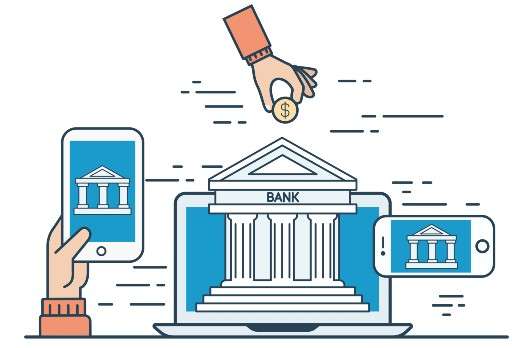The locker management system is a cutting-edge solution designed to revolutionize the way banks handle their locker services. From locker allocation and automation of locker-related tasks to locker security and access controls, the software is a one-stop solution for banking locker management. The modern locker management system eliminates the bottlenecks of the traditional (manual) locker management process and provides an easy, secure, and efficient way of managing lockers in the banks.
If you are a bank looking for a seamless system for managing your lockers with a smart digital application then read this article for complete guidance.
How Does Locker Management System Work?
With new-age locker management systems like Winsoft’s SmartLocker, banks can simplify, optimize, and improve their locker management processes.
-
SmartLocker offers a comprehensive dashboard that includes a feature that displays a real-time picture or snapshot of the locker allocation status. This means that at any given moment, the bank can see which lockers are currently in use, and which ones are available for rent.
-
Banks can improve their operational performance by automating most locker-related tasks such as locker requests, allocation, locker rent payment, and other operations like blocking, unblocking, and surrendering lockers.
-
The system keeps a record of all locker activities, allowing banks to track the usage effectively. It also ensures enhanced security and accountability in locker usage.
-
With advanced access control features, banks can provide access to authentic customers while maintaining strict security protocols.
A Tailored System to Meet Specific Needs of Banks
The locker management system from Winsoft offers customization options as per the needs of banks.

SmartLocker not only enhances locker utilization and improves security convenience but also sets the stage for banks to deliver modern, customer-oriented financial solutions.
The key elements that can be customized include:
-
Tailoring locker rents
-
Penalty matrix
-
Discounts
-
Locker schemes based on customer categories
Key Features of Our Next-Gen Banking Locker Management Solutions:
#1 Waitlist Feature
SmartLocker introduces a waitlist feature. If no lockers are vacant at a given time, the system will put customers seeking lockers into the waiting queue. This ensures a continuous flow of customers and as soon as any locker is vacant, the bank can allot the same to customers on the waiting list. This feature not only improves customer satisfaction but also optimizes locker utilization and allows banks to hold on to prospective customers.
#2 Compliance Handling
Compliance is a critical aspect of locker management for banks. Smartlocker streamlines compliance management by simplifying the handling of locker rent agreements. It achieves this by uploading scanned copies of the agreements and keeping track of their expiry dates. This automated process makes it easier to monitor and ensure compliance with rental agreements for lockers.
#3 MIS Reports
SmartLocker offers robust Management Information System (MIS) reporting capabilities. Banks can generate detailed reports that provide valuable insights into locker operations, usage patterns, and performance metrics.
#4 Multi-Channel Interaction for Enhanced Accessibility
SmartLocker facilitates interaction through multiple channels, including branches, online platforms, and mobile interfaces. SmartLocker ensures a seamless and consistent experience across all touchpoints: Offline as well as online access to locker services.
#5 Maker & Checker Functionalities for Robust Approval Processes
SmartLocker Maker & Checker functionalities ensure a robust approval process, reducing the risk of errors or unauthorized access. Locker management operations need the highest security protocols and SmartLocker ensures it by implementing a stringent approval mechanism.
#6 Real-Time Alerts and Notifications
SmartLocker generates various alerts and notifications, keeping customers and bank staff informed about relevant activities(/events). The system sends a notification alert when a locker is accessed, a reminder to renew a locker rental or an update on locker availability. These notifications enhance communication and ensure prompt actions.
Benefits of Locker Management Solutions for Banks
The adoption of SmartLocker offers numerous benefits for banks:
-
Operational Streamlining: Through task automation and removal of manual operations, SmartLocker augments the effectiveness of locker management and enhances operational output.
-
Improved Efficiency: SmartLocker boosts operational productivity, enabling banks to provide a flawless locker management experience.
-
Adaptability: SmartLocker is equipped to adapt to shifting prerequisites and innovations, ensuring easy adoption for banks as they expand and progress.
-
Increased Customer Satisfaction: Banks can focus more on delivering extraordinary customer service and value-added services, thanks to SmartLocker.
-
User-Friendly Interface: SmartLocker’s user interface is simple to traverse and instinctive, thereby boosting the customer’s overall interaction with it.
-
Reporting and Insights: By providing comprehensive insights into locker usage and trends, banks can make informed decisions to optimize their locker services.
Conclusion
Winsoft’s SmartLocker is a comprehensive locker management solution that not only enhances locker utilization and security but also sets the stage for banks to deliver modern, customer-oriented locker solutions. From allocation to tracking availability, SmartLocker streamlines all aspects of the locker management process making it easier for bank employees .
By improving efficiency, and prioritizing customer satisfaction, SmartLocker proves to be an invaluable tool for banks to manage the locker system.
For more information on how SmartLocker can transform your bank’s locker management, please reach out to us here.


















 Banks
Banks 
 This article will talk of how open banking can help the pensions industry. It is imperative to say that the technology can be used by the industry but the responsibility of using it is completely on the players of the industry.
This article will talk of how open banking can help the pensions industry. It is imperative to say that the technology can be used by the industry but the responsibility of using it is completely on the players of the industry. Open Banking is helping the pension industry go paperless.
Open Banking is helping the pension industry go paperless.